Affiliate marketing is perfect for beginners because it doesn’t require a big budget or fancy skills. You can start with free tools and learn as you go. I started with just a simple blog and a free email tool, and over time, it grew into a steady income stream. Plus, it’s flexible. You can work from home and pick niches you enjoy, like gaming or cooking, which keeps it fun. The best part? The market is huge. In 2025, affiliate marketing is worth over $17 billion globally, according to Statista, and it’s growing fast. That means there’s plenty of room for you to jump in and succeed.
Affiliate marketing is a great way to make money online by promoting products or services and earning a commission for every lead or sale made through your unique affiliate link. Here’s a comprehensive guide for beginners and those who want to become Super Affiliates!
What is Affiliate Marketing: A Complete Explanation in Simple Terms
Affiliate marketing is a promotional strategy in which an individual or team (affiliates) promote the products or services of a company (merchant or vendor) and receive a commission for each sale, click or lead generated as a result of their marketing efforts. This approach leverages the power of personal recommendations from opinion leaders and the knowledge of other marketers in online advertising to drive sales and increase brand awareness.
We recommend reading the “Glossary of Affiliate Marketing Terms” before proceeding with this article. This will help you to understand this text more easily and not to google for hints on the meaning of terms. If you are already familiar with most of the concepts, then continue reading.
Key Players in Affiliate Business:
- Merchants: businesses or individuals who sell products or services.
- Affiliates: individuals (influencers) or companies that promote the merchant’s products.
- Consumers: the end-users who purchase the products through affiliate links.
How Affiliate Marketing Works:
- Affiliate signs up a merchant’s affiliate program.
- Affiliate promotes the merchant’s products using unique affiliate links.
- Consumer clicks on the affiliate’s link and makes a purchase at sales page.
- Merchant pays a commission to the affiliate after the sale is confirmed.
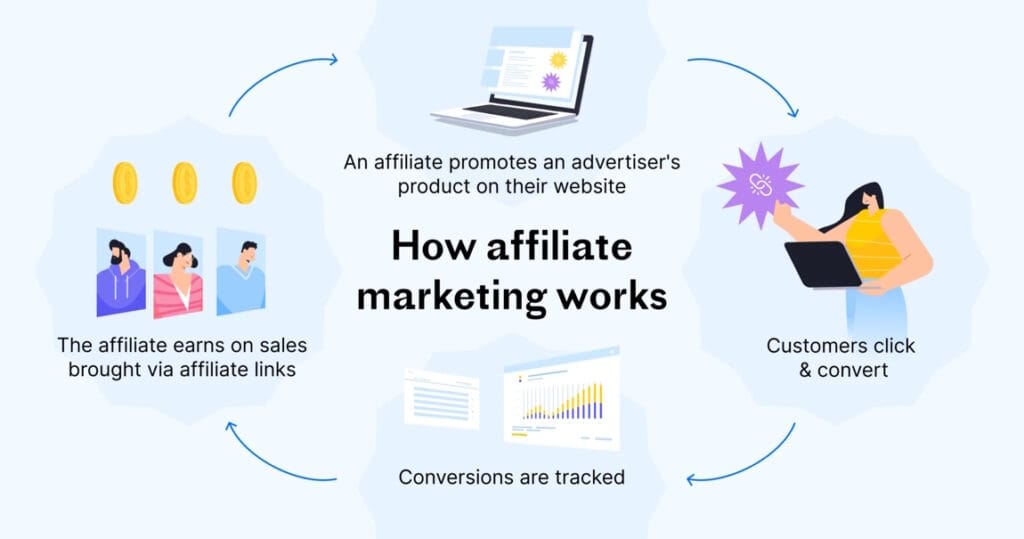
Why Online Money Makers Choose Affiliate Marketing?
Low startup costs: unlike traditional businesses, affiliate marketing requires minimal initial investment. You don’t need to create products, maintain inventory, or manage shipping. Many people achieve high promotion results using free traffic sources such as social media, forums or guest posting sites by utilizing their skills in writing interesting posts.
Passive income potential: once you’ve set up your affiliate links and marketing strategies, you can earn money continuously from sales without active involvement. A good example would be a Blog or a YouTube channel with good organic traffic and interesting content. You once place an article or video with a description of the product and your affiliate link and people themselves make targeted actions by clicking on it, and you get a commission on a regular basis.
Flexibility and freedom: work from anywhere, at any time. Affiliate marketing allows you to set your own schedule and work from any location. Most digital nomads are in the business of promoting products that they use themselves in their hobbies or for work. If you love to travel, your vertical is travel products, hotel bookings and car rentals, and maybe even comfortable shoes and gear for skiing and climbing. Advertising turns out to be native and people are more willing to buy products used by the blogger himself.
In addition, if you manage to achieve high rates of traffic and the number of purchases on your recommendation, advertisers will offer you their products for review and provide free samples, which you will test and use for free.
Scalability: with the right strategies, you can scale your affiliate marketing efforts to generate significant income over time. There are so-called “evergreen” niches that are in constant demand and will always be relevant, for example – weight loss, training, pet care and others.
How to Get Started with Affiliate Marketing
Ready to dive in? Here’s a step-by-step guide to get you going, based on what worked for me.
- Pick a Niche You Love. Start by choosing a topic you’re passionate about, like fashion, tech, or health. I picked online marketing because I enjoyed learning about it, and it helped me stay motivated. Look for areas with products people want to buy, and use free tools like Google Trends to see what’s popular.
- Build a Platform. You need a place to share your links. This could be a blog, a YouTube channel, or an Instagram account. I began with a free WordPress site, which cost me nothing to set up. Focus on creating content that helps people, like reviews or how-to guides, to build trust.
- Find Affiliate Programs. Join programs that match your niche. Big ones like Amazon Associates, ClickBank, or ShareASale are great starting points. I signed up for Amazon Associates early on and earned my first $100 promoting books. Check their websites, sign up, and grab your unique affiliate links.
- Create Content with Your Links. Write posts or make videos that include your affiliate links. For example, I wrote a review of a camera and added my Amazon link, which brought in $300 when 15 people bought it. Keep it honest and useful, and let people know you earn from purchases.
- Drive Traffic to Your Content. Get people to see your work by sharing it on social media or forums like Reddit. I used free Pinterest pins to drive 500 visitors to my blog in a month. The more people who see your links, the more chances you have to earn.
- Track and Improve. Watch how your links perform using AdsBridge. I noticed my tech posts got more clicks than others, so I focused there and doubled my earnings to $600 a month. Keep testing what works and adjust as you learn.
Different Types of Affiliate Marketing: A Beginner’s Guide
Let’s start by understanding the basics and looking at the main models of performance-based payment (what affiliate programs pay commissions for), give some examples, and then decide which direction to move in next. Whether you’re promoting products on a blog or sharing links on social media, there’s a model here for you – let’s explore:
| Model | Description | Example |
|---|---|---|
| Pay-Per-Sale (PPS) | The affiliate earns a commission each time a referred customer makes a purchase. | Amazon Associates, where affiliates earn a percentage of the sales they generate. You can create a website and do reviews on different products with an affiliate link to Amazon sellers. ClickBank – specializes in digital products and offers high commission rates. On the ClickBank Marketplace, you’ll find a huge variety of digital products and courses, many of which offer recurring subscriptions with ongoing royalties to their affiliates. |
| Pay-Per-Click (PPC) | The affiliate earns a commission for each click on their affiliate link, regardless of whether the click results in a sale. | Google AdSense or AdSterra, affiliates earn money based on the number of clicks on ads displayed on their websites. |
| Pay-Per-Lead (PPL) | The affiliate earns a commission for generating leads for the merchant, such as filling out a form, signing up for a trial, or subscribing to a newsletter. | Affiliates promoting online educational courses, where they earn a commission for every user who signs up for a free trial or subscribe to the mailing list. |
| Cost-Per-Acquisition (CPA) | Similar to PPS, but the affiliate is paid when the referred customer completes a specific action, such as making a purchase, downloading an app, level up at the game or signing up for a service. | Affiliate networks like MaxBounty, where affiliates earn commissions based on specific actions completed by referred users. Sites with games and surveys such as ySense or Freecash – when your referrals play, you make money. |
| Revenue Sharing | The affiliate earns a percentage of the recurring revenue generated from referred customers, typically for subscription-based services. | Software as a Service (SaaS) companies that offer recurring commissions to affiliates for each month the referred customer stays subscribed. Gambling offers, the advertiser pays a percentage of the player’s deposit for as long as the player is betting. |
| Two-Tier Affiliate Marketing | The affiliates not only earn commissions from their direct sales but also from the sales made by other affiliates they refer to the program. | Programs like iMonetizeit, where affiliates can earn commissions on two levels of referrals. |
| Influencer Marketing | Influencers use their platform to promote affiliate products to their audience, often through social media, blogs, or YouTube channels. | A beauty influencer on Instagram promoting skincare products and earning a commission for each sale made through their affiliate link. |
| Niche-Specific Affiliate Marketing | Affiliates specialize in a particular niche, focusing their marketing efforts on a specific audience or category of products. | A fitness blogger promoting workout equipment, supplements and apparel, stretching and muscle building courses, as well as diet programs to their fitness-focused audience. |
Now that we have figured out the payment models, we need to choose a niche and promotion methods.
Choosing the Right Niche in Affiliate Marketing
Choosing the right niche in affiliate marketing is very important for several reasons, as your success in this business largely depends on it. Choose a niche that you are passionate and knowledgeable about, this will allow you to create authentic and engaging content. It will also help you stand out in a competitive market.
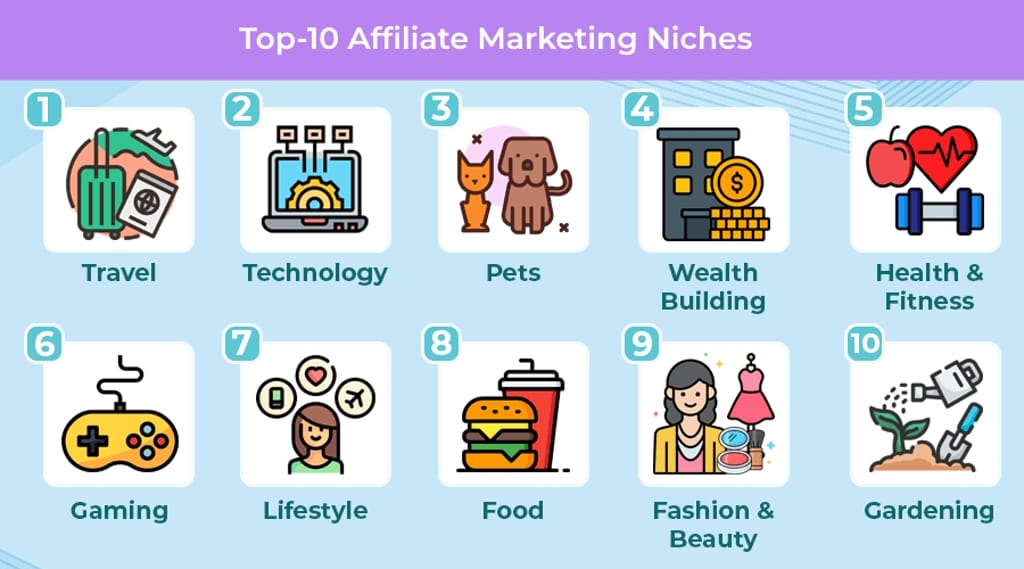
Major Niches in Affiliate Marketing: Profitable Opportunities for 2025
When I started affiliate marketing in 2010, I dove into niches like electronics and health, earning my first $500 from a gadget review blog. Over the years, I’ve tested dozens of markets, scaling to $20K/month by 2025, and learned that the right niche with solid offers can transform your income. Below is a breakdown of top niches, their subcategories with specific products, market sizes, average commissions, and best promotion methods – perfect for targeting buyers ready to invest in affiliate products.
| Niche | Subcategory | Market Size $M | Avg. Commission per Sale | Best Promotion Methods |
|---|---|---|---|---|
| Electronics & Tech | Smartphones & Gadgets (e.g., iPhone cases, wireless chargers) | 450 | $20-50 | YouTube reviews with free Canva thumbnails, Reddit AMA in r/gadgets for 200+ shares. |
| Software (e.g., antivirus programs, photo editors) | 320 | $15-40 | Blog guides with Jaaxy keywords, email funnels via Mailchimp. | |
| Health & Fitness | Dietary Supplements (e.g., vitamins, weight loss pills) | 280 | $10-30 | Instagram Reels with free Canva edits, affiliate links in TikTok bio for 500 clicks/month. |
| Fitness Equipment (e.g., home gyms, yoga mats) | 150 | $20-60 | Pinterest pins with free Canva infographics, Facebook groups for niche targeting. | |
| Beauty & Personal Care | Cosmetics & Skin Care (e.g., face creams, makeup kits) | 200 | $5-20 | Beauty tutorials on YouTube, Reddit threads in r/beauty for 300 engagements. |
| Perfumes (e.g., designer fragrances, essential oils) | 90 | $10-25 | Product unboxings on TikTok, free Google Forms polls for audience feedback. | |
| Fashion & Clothing | Clothing & Accessories (e.g., dresses, bags) | 350 | $5-15 | Instagram Stories with free Canva templates, Pinterest boards for 1K monthly views. |
| Footwear (e.g., sneakers, boots) | 180 | $10-30 | Fashion hauls on YouTube, Reddit posts in r/fashion for community shares. | |
| Financial Services | Credit Cards & Loans (e.g., cashback cards, personal loans) | 400 | $50-150 | Blog comparisons with Jaaxy SEO, email newsletters via Mailchimp. |
| Investments & Savings (e.g., stock apps, savings accounts) | 300 | $30-100 | Webinars on Zoom (free tier), Reddit AMAs in r/personalfinance. | |
| Business Process Outsourcing (e.g., accounting software, virtual assistants) | 120 | $20-50 | LinkedIn posts with free Canva graphics, YouTube tutorials for leads. | |
| Education & Courses | Online Courses & Training (e.g., coding bootcamps, language classes) | 250 | $20-100 | Blog reviews with free Google Keyword Planner, email sequences via Mailchimp. |
| Books & Training Materials (e.g., e-books, workbooks) | 80 | $5-15 | Pinterest infographics with free Canva, Reddit discussions in r/books. | |
| Travel & Tourism | Hotel Reservations (e.g., Booking.com deals, Airbnb stays) | 600 | $10-50 | Travel blogs with Jaaxy keywords, Instagram Reels for 500 views. |
| Tours & Excursions (e.g., adventure tours, city guides) | 200 | $15-40 | YouTube vlogs, Pinterest travel boards with free Canva. | |
| Home & Garden | Furniture & Decor (e.g., sofas, wall art) | 300 | $10-30 | Home tour videos on YouTube, Reddit threads in r/homedecor. |
| Garden Products (e.g., tools, plants) | 100 | $5-20 | Seasonal Pinterest pins with free Canva, Facebook groups for gardeners. | |
| Games & Entertainment | Video Games (e.g., Steam keys, console games) | 250 | $10-30 | Twitch streams, Reddit posts in r/gaming for shares. |
| Online Casinos (e.g., betting platforms, slots) | 150 | $50-200 | Review blogs with Jaxxy, careful targeting to avoid bans. | |
| Cars & Accessories | Auto Parts & Accessories (e.g., car mats, dash cams) | 220 | $10-40 | YouTube install guides, Reddit in r/cars for discussions. |
| Auto Insurance (e.g., policy quotes, coverage plans) | 180 | $20-80 | Comparison blogs with free Ubersuggest, email funnels. | |
| Pets & Animals | Feeds & Accessories (e.g., pet food, collars) | 120 | $5-15 | Instagram pet pics with free Canva, Reddit in r/pets. |
| Veterinary Services (e.g., pet insurance, vet appointments) | 90 | $10-30 | Blog tips with free Ubersuggest, Facebook pet groups. | |
| Sports & Recreation | Sports Equipment (e.g., bikes, gym gear) | 160 | $10-40 | YouTube workouts, Pinterest fitness boards with free Canva. |
| Outdoor Accessories (e.g., camping tents, fishing rods) | 110 | $5-20 | Seasonal Reddit threads in r/outdoors, Instagram Reels. | |
| Children’s Products | Toys & Games (e.g., educational toys, board games) | 180 | $5-15 | YouTube reviews, Pinterest kid activity pins with free Canva. |
| Children’s Clothing (e.g., kids’ outfits, shoes) | 130 | $5-10 | Instagram fashion posts, Reddit in r/parenting for shares. |
Why These Niches Matter for Your Affiliate Journey
Each niche offers room to segment – think “vegan skincare” under Beauty or “budget travel tours” under Travel – letting you zero in on hungry buyers. From my experience, mixing tools like Jaaxy with targeted content on your blog can drive 1,000+ visits/month per niche. Start with high-commission niches like Financial Services or Online Casinos, but don’t sleep on steady earners like Health or Fashion – my $15K/month mix proves diversification wins.
Each of these niches can be further segmented, allowing you to more precisely target your marketing efforts and attract specific audiences.
How to Identify Profitable Niches
Research market trends, competition, and audience demand. Tools like Google Trends and Jaaxy (keyword research) can help you identify promising niches.
Pro Tip: when you are new to this business, we recommend using spy-services, where you can see what advertising campaigns are currently running in advertising networks, what creatives are used by other affiliates for different offers and what audience they are designed for. This way you can copy other people’s ideas and run your ads in a similar way to reduce the cost of testing your funnels.
Balancing passion and profitability: while it’s important to choose a niche you’re passionate about, ensure there is a potential for profit by assessing the market demand and available affiliate programs.
As we said above, there are evergreen niches and offers that will always be relevant, we always advise newbies to take a closer look at them. Here is an example of such profitable offers in the healthcare vertical:
- Prostate treatment
- Vision restoration
- Memory improvement
- Diabetes control
- Teeth strengthening
These problems have always been there and will always be there and people are looking for solutions, which you can offer them by showing ads in the right place.
Just look at how many searches there are for diabetes in one country, imagine how many people are looking for a solution to this problem all over the world and how you can help them by offering Keto diets, for example, and make money from it.
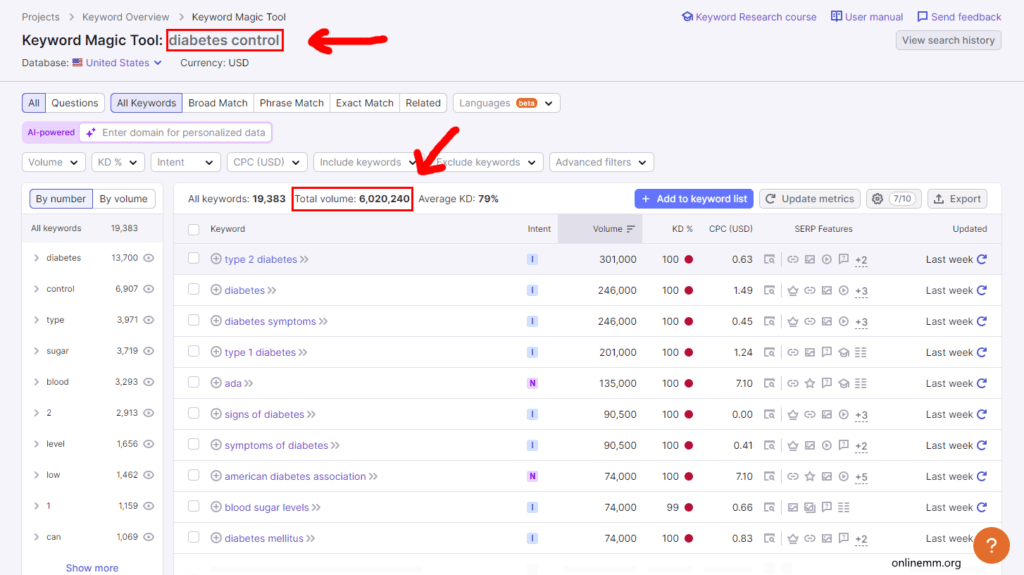
How to Search for Affiliate Programs for Promotion
To find and join affiliate programs related to your niche that offer competitive commissions and reliable products, use search engines, affiliate networks, and industry forums. In addition, there are websites where you can find and compare offers and terms from different networks, such as affplus.com. Read descriptions, reviews, and overviews of affiliate networks to decide whether it is worth joining and promoting or looking for another relevant offer.
When evaluating affiliate programs, pay attention to these points:
- Commission rates: higher commission rates can significantly affect your earnings.
- Cookie duration: longer cookie usage increases the likelihood of commissions.
- Product quality: promoting high quality products builds trust with your audience.
- Promotion conditions: what sources of traffic and creatives are allowed to attract clients. Be careful, if you do not comply with the rules you may be disconnected from the program and not get paid even for confirmed clients.
- Promotional materials: does the affiliate network provide promotional materials for their offers, such as banners, landing pages, video creatives and email texts.
- Reputation: read reviews from other affiliates working with the program. There are affiliate networks that do shave and do not pay commissions to their affiliates who follow all the rules.
Affiliate networks like iMonetizeit, ClickBank, CJ Affiliate, Rakuten, MaxBounty and Awin aggregate multiple affiliate programs, making it easier to find and join programs that suit your niche.
Use our Affiliate Earnings Calculator to understand how different offers affect your profits.
Building Your Affiliate Marketing Platform
Creating a Website or Blog
The importance of having a specialized platform: A professional website or blog provides your online presence and credibility. It is also the central hub for your affiliate content and marketing efforts. On your personal website, you set your own rules and post content relevant to your goals. You can create a large portal with different categories of articles, or a blog with a few pages customized for a specific niche, or a single product landing page.
The main advantage of your own website (landing page) is that you control all processes, can track visitor behavior, edit content, set up trackers, and conduct A/B tests to achieve maximum CTR and conversions.
Step-by-step guide to setting up a website:
- Choose a domain name: select a generic domain name that reflects your niche and is easy to remember.
- Select a hosting provider: choose a reliable hosting service that offers good speed and uptime. Our advise – InterServer.
- Install a CMS: WordPress is a popular choice for its ease of use and flexibility to fine tune your site.
- Design your site: choose a theme and customize it to fit your brand. Don’t overload your site with banner ads, they make it harder for visitors to read and find the content they want.
- Install essential plugins: use plugins for SEO, security, and performance optimization.
- Add social buttons: if you have interesting content people will share it on their social networks, this will give weight to your article and attract traffic to your site.
- Collect emails: do not underestimate such a tool as email marketing, the audience that has already interacted with you becomes targeted and more loyal to you.
Essential pages for an affiliate website: most affiliate programs require these pages on your site due to the regulators and laws of some countries. Also the presence of this information indicates your serious intentions and the quality of your site.
- Home page: introduces your site and highlights your main content.
- About page: shares your goals and establishes credibility.
- Contact page: provides a way for visitors to reach you.
- Privacy Policy and Disclosure pages: legal pages to comply with regulations and disclose affiliate relationships.
Content Creation Strategies in Affiliate Marketing
Types of content for affiliate marketing: сreating diverse and engaging content is essential for successful affiliate marketing. Here are some key types of content to consider:
- Product reviews: in-depth evaluations of products or services, providing honest insights and personal experiences to help readers make informed decisions.
- Comparisons: side-by-side comparisons of similar products or services, highlighting their differences, pros, and cons to assist readers in choosing the best option.
- Tutorials and how-to: step-by-step guides on how to use a product or service, showcasing its features and benefits, and demonstrating its value in solving a problem or fulfilling a need.
- Lists: curated lists of top products, tools, or resources in a particular niche, offering quick recommendations and driving traffic through easily digestible content.
- Case studies: detailed stories of how a product or service helped solve a problem or achieve a specific goal, providing real-world examples and building trust with your audience.
- Buying guides: comprehensive guides that cover everything a potential buyer needs to know about a category of products, including features to look for, top picks, and tips for making a purchase.
- Story telling: a strategy similar to case studies, but in the form of a story, people love happy ending stories.
One example: A woman didn’t understand what was going on with her body for a very long time, she was tired all the time and felt weak. After getting a checkup, she was diagnosed with diabetes, was prescribed a diet {name of product} and over time her health returned to normal. One of the best content writing strategies when it comes to convincing a potential client of the effectiveness of an offer. People trust other people’s feedback and always believe in a miracle.
- News page: this strategy is used for writing near-topic content, but as relevant to the niche as possible.
For example, a man found a briefcase with money at a bus stop and had a nice vacation renting a yacht with women and champagne. This “fake news” causes an association with “easy money” and here you can advertise gambling offers, with a very high conversion rate into active players.
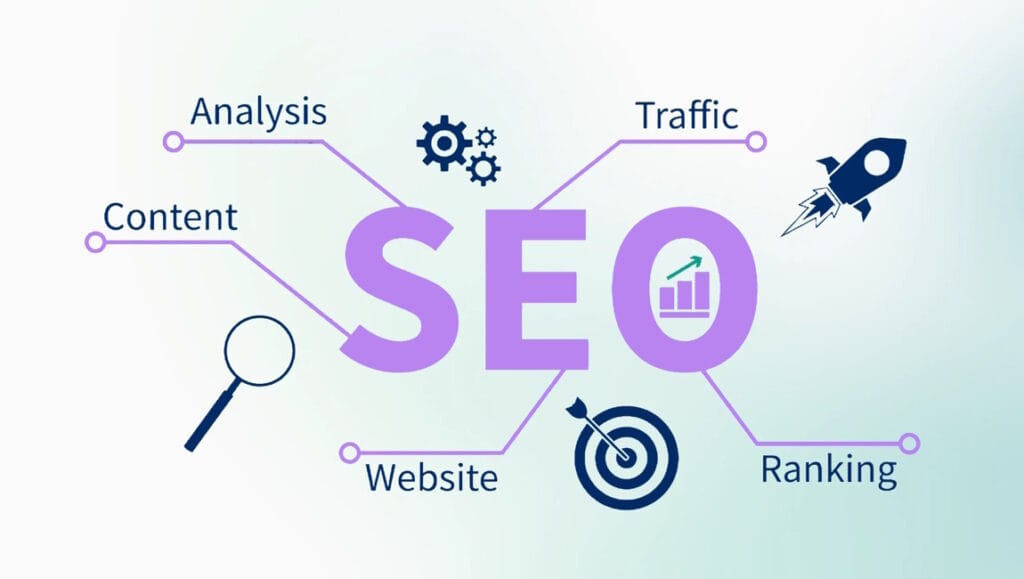
SEO Basics for Promoting Affiliate Offers on Blogs:
- Keyword research: Identify and use relevant keywords that your target audience is searching for, ensuring they are naturally incorporated into your content. Nowadays it is difficult to compete with sites that have long been placed on the network and occupy top positions in the search engine, so you need to look for keywords with low frequency of queries and use them when writing articles.
- Quality сontent: сreate high-quality, valuable content that addresses the needs and interests of your audience, encouraging engagement and shares. Now many sites and texts are generated by AI, search engines are not like them, so if you write interesting and quality articles, you have a high chance to take good positions and get organic traffic.
- On-page SEO: optimize your content with proper meta tags, headers, URLs, and alt text for images to improve search engine visibility. Use SEO plugins for hints on what can be improved.
- Visualization: use memorable and informative images to “color” your content. Visual memory contributes to brand recognition.
- Backlink building: acquire high-quality backlinks from reputable websites to increase your site’s authority and improve search engine rankings. You can hire professionals to promote your website by building backlinks on the Fiverr freelancer exchange.
- User experience: ensure your website is mobile-friendly, fast-loading, and easy to navigate to provide a positive user experience and reduce bounce rates.
- Internal linking: use internal links to guide visitors to other relevant pages on your site, improving navigation and keeping users engaged longer. Internal linking also helps your website rank well in Google,Yahoo and Bing search engines.
- Regular updates: frequently update your content to keep it fresh and relevant, signaling to search engines that your site is active and up-to-date.
How to Write Engaging and Persuasive Content:
- Know your audience: understand their needs and preferences. Think about what people are looking for when typing words into the Google search bar, will they find answers in your article? Will they be able to solve their problem? There are two main types of content – informative and entertaining. In the first case it is easier to advertise because people are focused on finding the information they need, while in the second case you can also sell natively, but it is more difficult to do so and other approaches are needed.
- Use a conversational tone: write as if you’re talking to a friend. People do not like complexity and try to find answers as quickly as possible, so your text should be friendly and not overloaded with scientific phrases, if it is not required for the disclosure of the topic.
- Include CTAs: encourage readers to take action, such as clicking an affiliate link or subscribing to your newsletter.
- Use AIDA technique:
Attention: start with a bold headline or eye-catching visual element to instantly capture your audience’s attention. Describe what “pain” or need this product solves.
Interest: capture interest by providing interesting and relevant information that shows how your product or service solves a problem or fulfills a need.
Desire: create desire by emphasizing the unique benefits and value of your offering using compelling arguments and examples. Attach positive product reviews from “real” people.
Action: conclude with a clear and motivating call to action (CTA), guiding the audience to the next step, whether that’s a purchase, subscription or other targeted goal.
Promoting and Building an Audience
Strategies for driving traffic to your site:
- SEO: optimize your site and content to rank higher in search engine results.
- Social media: share your content on social media platforms to reach a wider audience. Create your own group and post articles in it with a link to your site, create visually appealing posts with the AdCreative service.
- Email marketing: build an email list and send regular newsletters to engage with your audience. Offer incentives like free e-books or exclusive content to encourage visitors to subscriber.
- Free traffic sources: be active on specialized forums and related sites where people ask questions, such as Quora and Reddit, answering questions you can leave links to your site without spending money on customer acquisition and paid advertisements. The second most visited website in the world – YouTube, and posting videos on it is free, so you can not miss this opportunity and need to create interesting videos to promote your site.
- Paid advertising: there is a wide range of ways you can attract audience to your site, among them contextual advertising in search engines, banner ads on other people’s sites, video ads on YouTube, teasers, popup ads on mobile and so on.
Engaging with your audience: Respond to comments to stimulate interest and explain unclear points, ask for feedback, and build a community around your site.
Conclusion: Let’s Recap What You Learned Today
In this article we covered the basics for starting your affiliate business, touching on topics such as: what affiliate marketing is, what niches there are, how to create a website and fill it with quality content, how to promote and create a loyal audience to sell affiliate products and much more.
Start small with a $50 budget for a domain or ads if you can. Be patient, as it took me six months to hit $1,000 a month. Always disclose that you use affiliate links to build trust with your audience, which Google and buyers appreciate.
In the Advanced Techniques in Affiliate Marketing article, we’ll break down the advanced techniques and secret strategies of Super Affiliates. Learn these materials today to gain financial freedom and achieve your goals tomorrow!
Frequently Asked Questions About Affiliate Marketing
1. What is affiliate marketing and how does it work?
Affiliate marketing is a way of making money where you recommend products or services through unique links and earn a commission for each sale or action. For example, you create a blog or YouTube channel, promote affiliate programs, and when your audience buys from your links, you earn.
2. How to start earning from affiliate marketing?
Start by choosing a niche like finance or fitness and create a platform – a WordPress blog or YouTube channel. Sign up for affiliate networks like PartnerStack (up to $2000/sale) or Rakuten and add links to your content. Use Google Trends to find popular topics and attract traffic through SEO or social media sites like Reddit (r/Beermoney).
3. How fast can you make money from affiliate marketing?
Earnings can start in 3-6 months with regular content creation, but a steady income ($500+/month) usually requires 1-2 years. It all depends on your ability to attract traffic through SEO or viral YouTube videos. Use Ubersuggest to analyze low competition keywords like “best budgeting apps” to accelerate growth.
4. Which affiliate programs pay the most?
Programs in the niches of hosting (e.g. Hostinger, up to $200/sales), SaaS (e.g. Accounting, up to $2000/lead) and financial apps (e.g. Robinhood, $5-$20/registration) offer high commissions. Choose programs with recurring payouts, such as AWeber (30% monthly), to provide passive income.
5. Is affiliate marketing passive income?
Affiliate marketing is partially passive: once you create content and attract traffic, you can earn for months, but you need to update your content regularly and analyze conversions. Use Google Analytics to track clicks and Bitly to monitor affiliate links to optimize your income.
6. How much can you earn from affiliate marketing?
Beginners earn $100-$500/month and experienced affiliates earn $5,000-$20,000+/month. For example, a Hostinger hosting promotion with traffic of 3,000 visitors/day can generate 5-10 sales per month, which is $1,000-$2,000. Focus on quality content and SEO to scale your income.
7. How is money paid out in affiliate marketing?
Most programs pay via PayPal, bank transfer, or platforms like ShareASale. Payouts are usually monthly or when you reach a threshold (like $50). Set up sales notifications via email to track your income in real time.
8. How can beginners earn money from affiliate marketing?
For beginners, the easiest way to start is with a YouTube channel: make short videos like “How to Create a Blog in 10 Minutes” with CapCut and promote hosting programs like NameHero ($50-$125/sale). Share videos on Reddit (r/Entrepreneur) and X to rack up views quickly.
9. Which affiliate programs are the best for making money?
Amazon Associates programs (4-7% for sales) and hosting programs like Scala Hosting ($50-$200/sales) are the best to start with. Amazon is popular because of the wide range of products, and hosts give high commissions. Use Impact (800+ brands) to find programs that fit your niche.
10. How to make money from affiliate marketing without a website?
Create a YouTube channel or use Medium.com (a free blogging platform). Write product reviews like “Best Apps for Investing” with affiliate links from Robinhood or Wealthfront. Promote content through Pinterest with optimized pins using Canva.
11. Is affiliate marketing worth the time?
Yes, affiliate marketing is worth the time if you’re willing to invest in creating content and attracting traffic. Without a plan and traffic, results will be minimal. Use AnswerThePublic for content ideas to engage your target audience.
12. How do YouTube bloggers make money from affiliate marketing?
YouTube bloggers add affiliate links in video descriptions or use promo codes that give discounts and bring in commissions. For example, a “Top 5 Hiking Gadgets” video with links to Amazon can bring in 4-7% on each sale. Create Shorts with CapCut for viral reach.
Let’s Socialize!
Join our Reddit Community for more insides, and share in the comments below, how did you learn about affiliate marketing, and have you tried promoting affiliate offers?


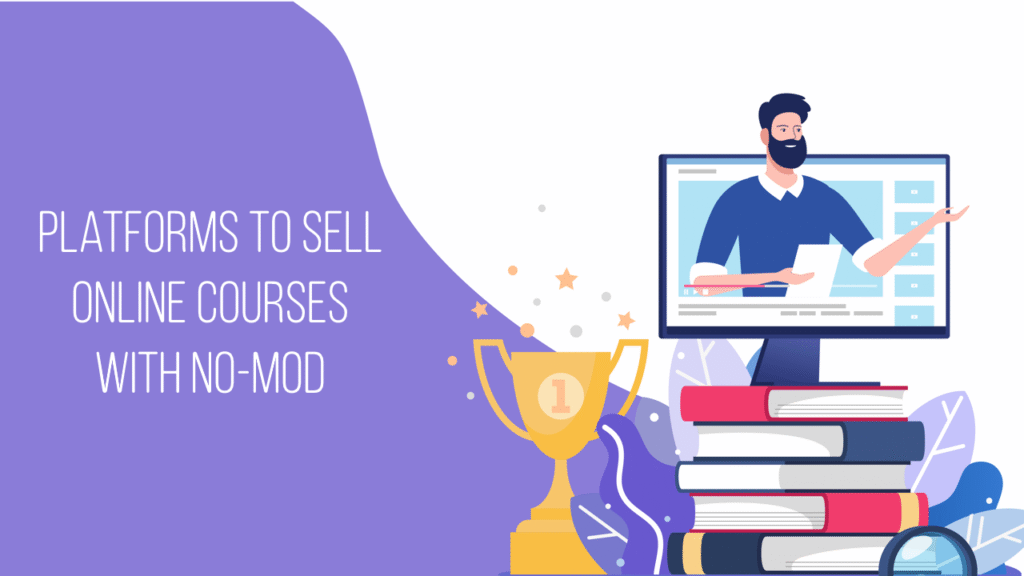
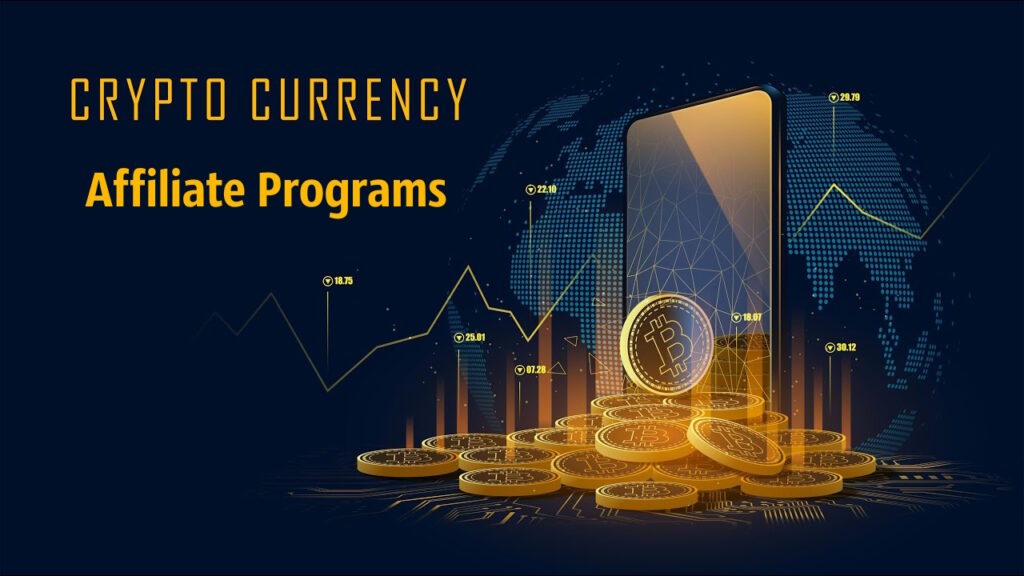
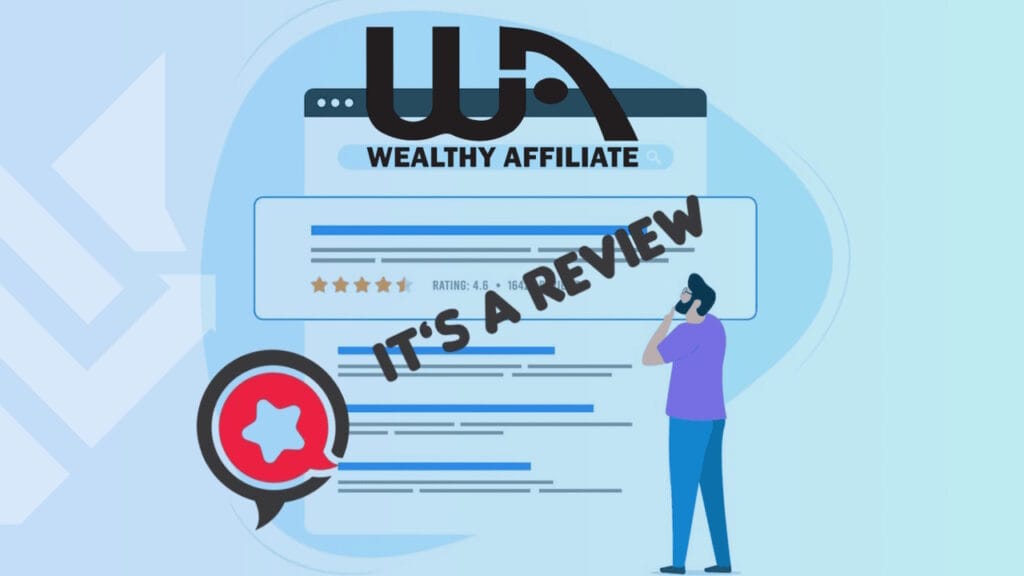
A very informative article for beginners, it is clear that the author is knowledgeable about the subject. Overall, the blog is excellent. I think I’ll stick around here for a while.
I’m a marketer with little experience and just starting to understand affiliate marketing, your article is very detailed and explains well what and how things work! Thanks for the detailed outline, I learned some secrets that were not in my head, now everything is clear!
Adam, thank you for appreciating the article! Affiliate marketing is indeed a very exciting business, it requires effort and constant learning, on my blog you will find absolutely everything you need to succeed in this field. Stay tuned and read other similar articles!